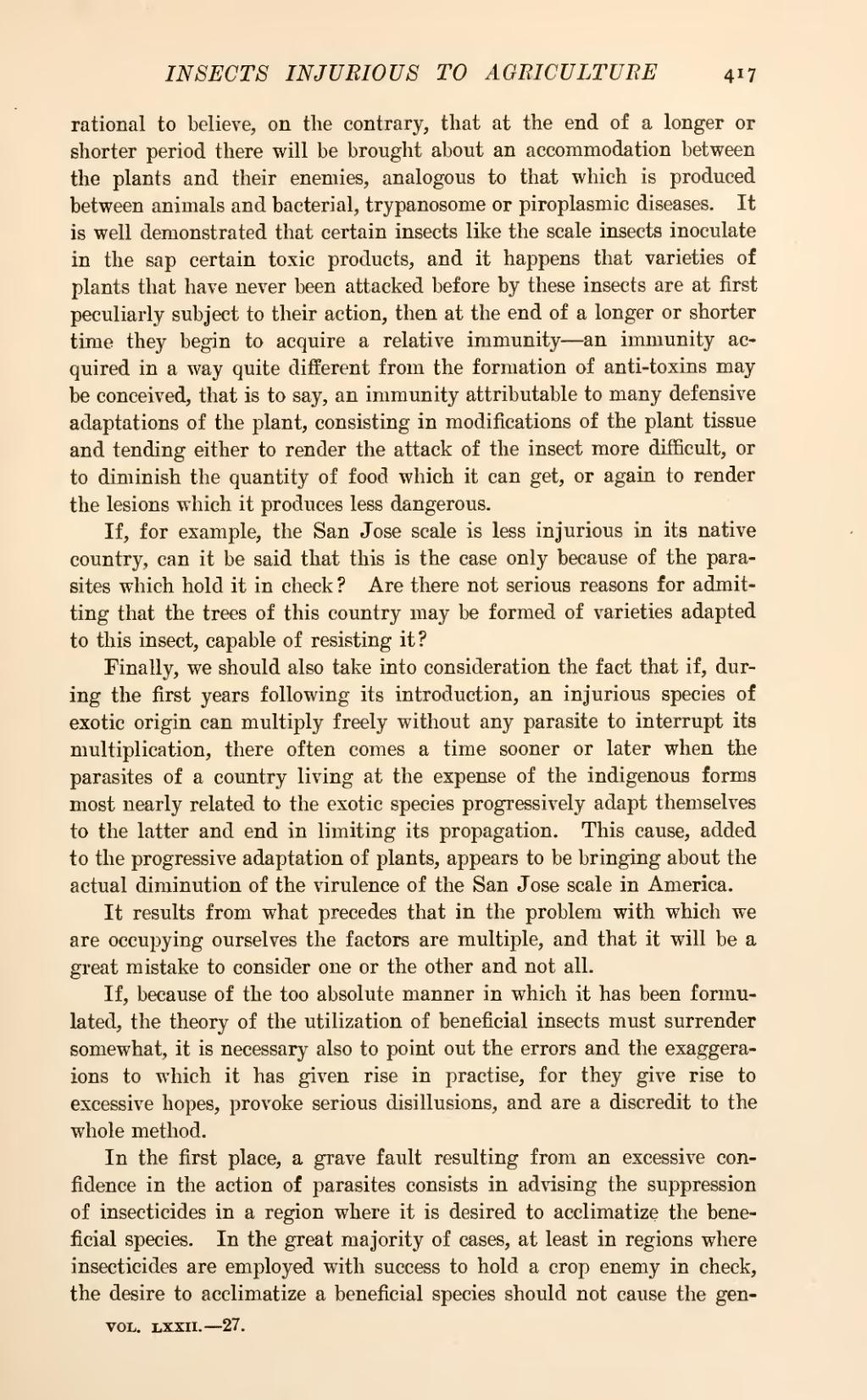rational to believe, on the contrary, that at the end of a longer or shorter period there will be brought about an accommodation between the plants and their enemies, analogous to that which is produced between animals and bacterial, trypanosome or piroplasmic diseases. It is well demonstrated that certain insects like the scale insects inoculate in the sap certain toxic products, and it happens that varieties of plants that have never been attacked before by these insects are at first peculiarly subject to their action, then at the end of a longer or shorter time they begin to acquire a relative immunity—an immunity acquired in a way quite different from the formation of anti-toxins may be conceived, that is to say, an immunity attributable to many defensive adaptations of the plant, consisting in modifications of the plant tissue and tending either to render the attack of the insect more difficult, or to diminish the quantity of food which it can get, or again to render the lesions which it produces less dangerous.
If, for example, the San Jose scale is less injurious in its native country, can it be said that this is the case only because of the parasites which hold it in check? Are there not serious reasons for admitting that the trees of this country may be formed of varieties adapted to this insect, capable of resisting it?
Finally, we should also take into consideration the fact that if, during the first years following its introduction, an injurious species of exotic origin can multiply freely without any parasite to interrupt its multiplication, there often comes a time sooner or later when the parasites of a country living at the expense of the indigenous forms most nearly related to the exotic species progressively adapt themselves to the latter and end in limiting its propagation. This cause, added to the progressive adaptation of plants, appears to be bringing about the actual diminution of the virulence of the San Jose scale in America.
It results from what precedes that in the problem with which we are occupying ourselves the factors are multiple, and that it will be a great mistake to consider one or the other and not all.
If, because of the too absolute manner in which it has been formulated, the theory of the utilization of beneficial insects must surrender somewhat, it is necessary also to point out the errors and the exaggeraions to which it has given rise in practise, for they give rise to excessive hopes, provoke serious disillusions, and are a discredit to the whole method.
In the first place, a grave fault resulting from an excessive confidence in the action of parasites consists in advising the suppression of insecticides in a region where it is desired to acclimatize the beneficial species. In the great majority of cases, at least in regions where insecticides are employed with success to hold a crop enemy in check, the desire to acclimatize a beneficial species should not cause the gen-
